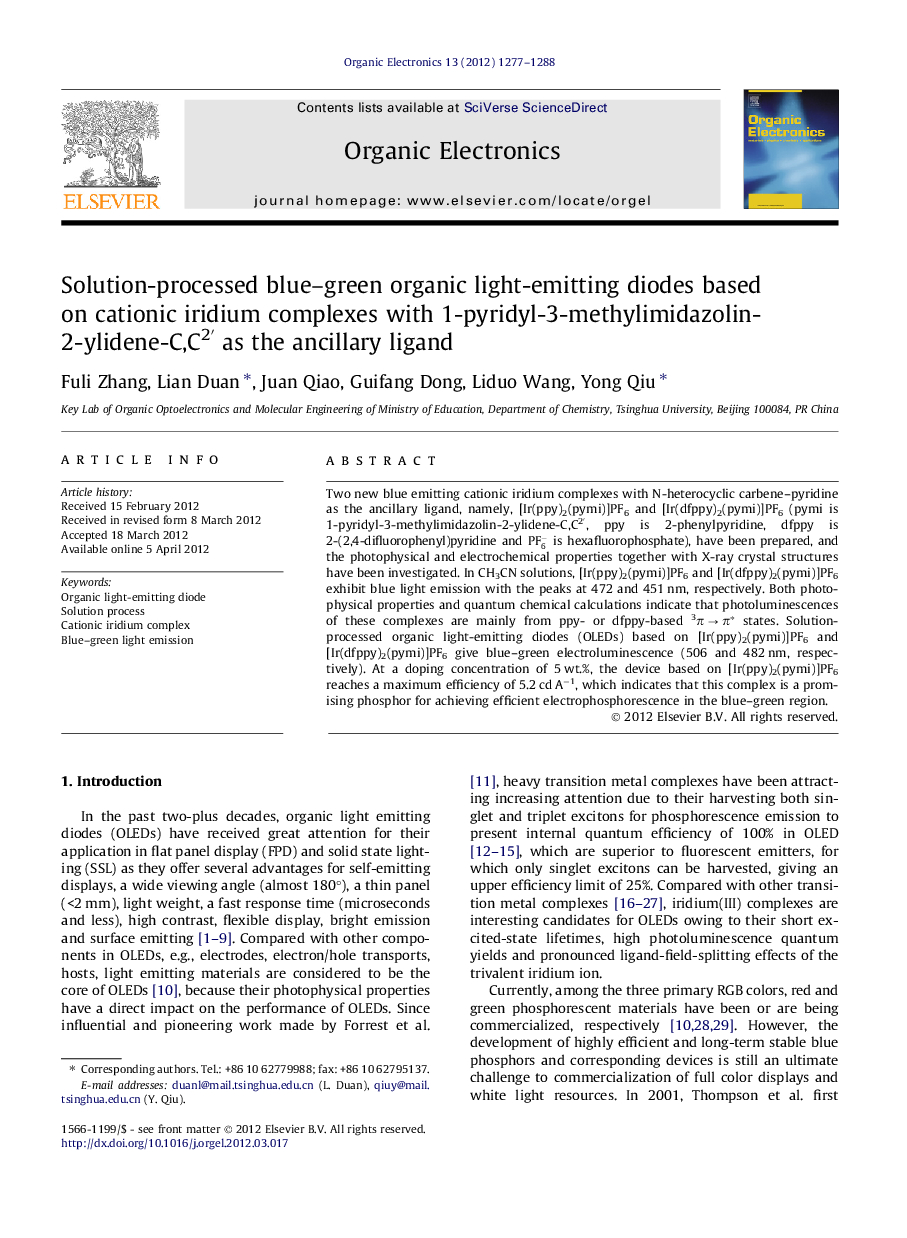| Article ID | Journal | Published Year | Pages | File Type |
|---|---|---|---|---|
| 1267543 | Organic Electronics | 2012 | 12 Pages |
Two new blue emitting cationic iridium complexes with N-heterocyclic carbene–pyridine as the ancillary ligand, namely, [Ir(ppy)2(pymi)]PF6 and [Ir(dfppy)2(pymi)]PF6 (pymi is 1-pyridyl-3-methylimidazolin-2-ylidene-C,C2′, ppy is 2-phenylpyridine, dfppy is 2-(2,4-difluorophenyl)pyridine and PF6- is hexafluorophosphate), have been prepared, and the photophysical and electrochemical properties together with X-ray crystal structures have been investigated. In CH3CN solutions, [Ir(ppy)2(pymi)]PF6 and [Ir(dfppy)2(pymi)]PF6 exhibit blue light emission with the peaks at 472 and 451 nm, respectively. Both photophysical properties and quantum chemical calculations indicate that photoluminescences of these complexes are mainly from ppy- or dfppy-based 3π → π∗ states. Solution-processed organic light-emitting diodes (OLEDs) based on [Ir(ppy)2(pymi)]PF6 and [Ir(dfppy)2(pymi)]PF6 give blue–green electroluminescence (506 and 482 nm, respectively). At a doping concentration of 5 wt.%, the device based on [Ir(ppy)2(pymi)]PF6 reaches a maximum efficiency of 5.2 cd A−1, which indicates that this complex is a promising phosphor for achieving efficient electrophosphorescence in the blue–green region.
Graphical abstractFigure optionsDownload full-size imageDownload as PowerPoint slideHighlights► Cationic iridium complexes with N-heterocyclic carbene–pyridine as the ancillary ligand. ► Blue phosphorescence emission of cationic iridium complexes. ► Solution-processed blue–green organic light-emitting diodes.
